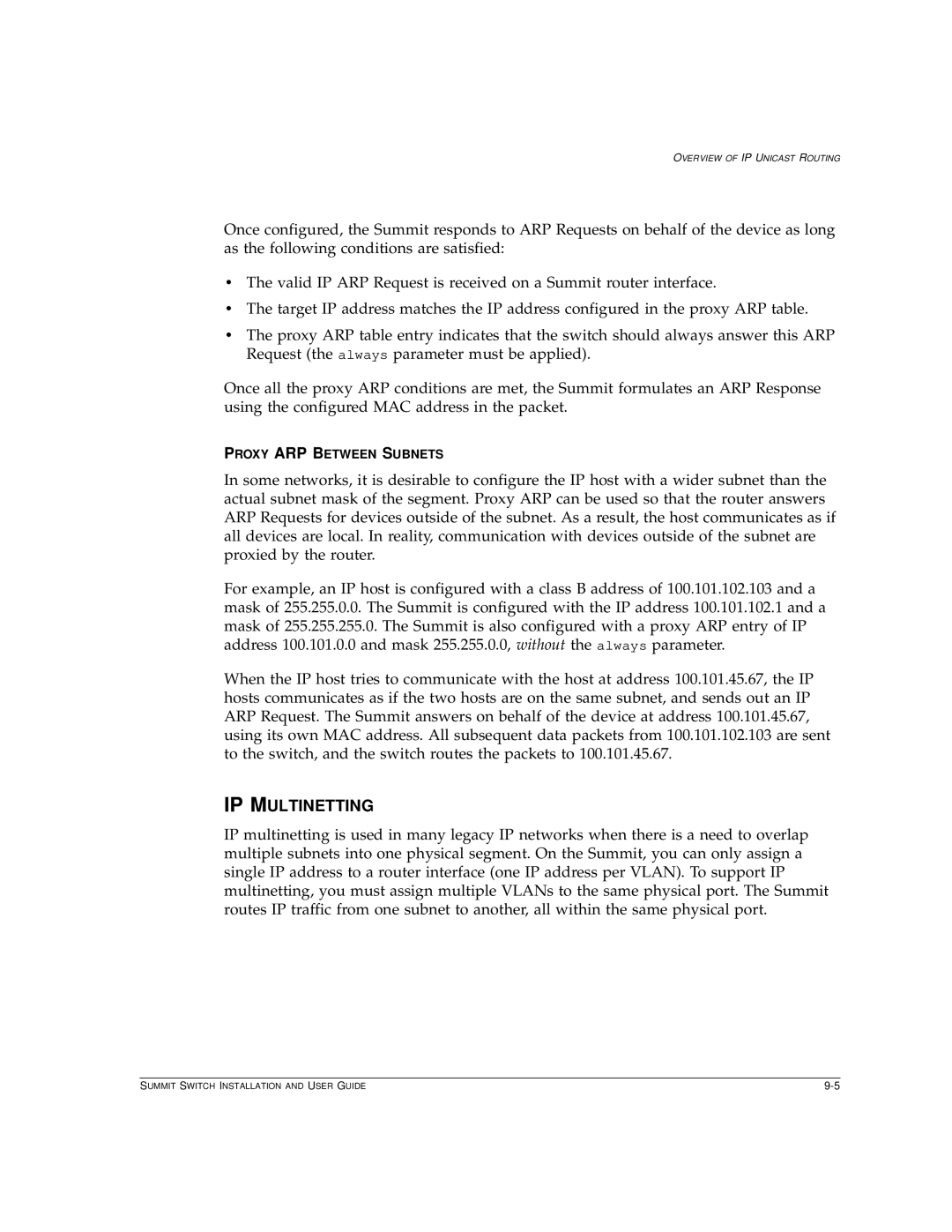OVERVIEW OF IP UNICAST ROUTING
Once configured, the Summit responds to ARP Requests on behalf of the device as long as the following conditions are satisfied:
•The valid IP ARP Request is received on a Summit router interface.
•The target IP address matches the IP address configured in the proxy ARP table.
•The proxy ARP table entry indicates that the switch should always answer this ARP Request (the always parameter must be applied).
Once all the proxy ARP conditions are met, the Summit formulates an ARP Response using the configured MAC address in the packet.
PROXY ARP BETWEEN SUBNETS
In some networks, it is desirable to configure the IP host with a wider subnet than the actual subnet mask of the segment. Proxy ARP can be used so that the router answers ARP Requests for devices outside of the subnet. As a result, the host communicates as if all devices are local. In reality, communication with devices outside of the subnet are proxied by the router.
For example, an IP host is configured with a class B address of 100.101.102.103 and a mask of 255.255.0.0. The Summit is configured with the IP address 100.101.102.1 and a mask of 255.255.255.0. The Summit is also configured with a proxy ARP entry of IP address 100.101.0.0 and mask 255.255.0.0, without the always parameter.
When the IP host tries to communicate with the host at address 100.101.45.67, the IP hosts communicates as if the two hosts are on the same subnet, and sends out an IP ARP Request. The Summit answers on behalf of the device at address 100.101.45.67, using its own MAC address. All subsequent data packets from 100.101.102.103 are sent to the switch, and the switch routes the packets to 100.101.45.67.
IP MULTINETTING
IP multinetting is used in many legacy IP networks when there is a need to overlap multiple subnets into one physical segment. On the Summit, you can only assign a single IP address to a router interface (one IP address per VLAN). To support IP multinetting, you must assign multiple VLANs to the same physical port. The Summit routes IP traffic from one subnet to another, all within the same physical port.
SUMMIT SWITCH INSTALLATION AND USER GUIDE |
